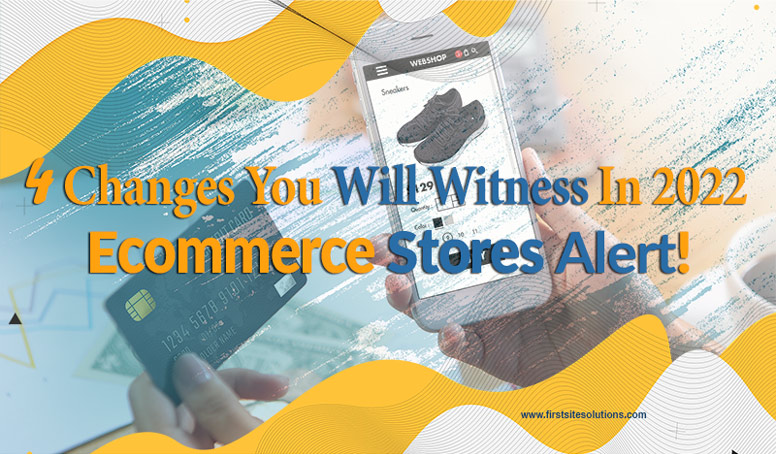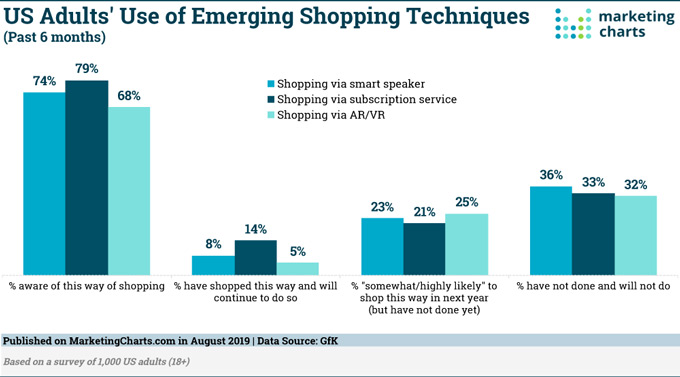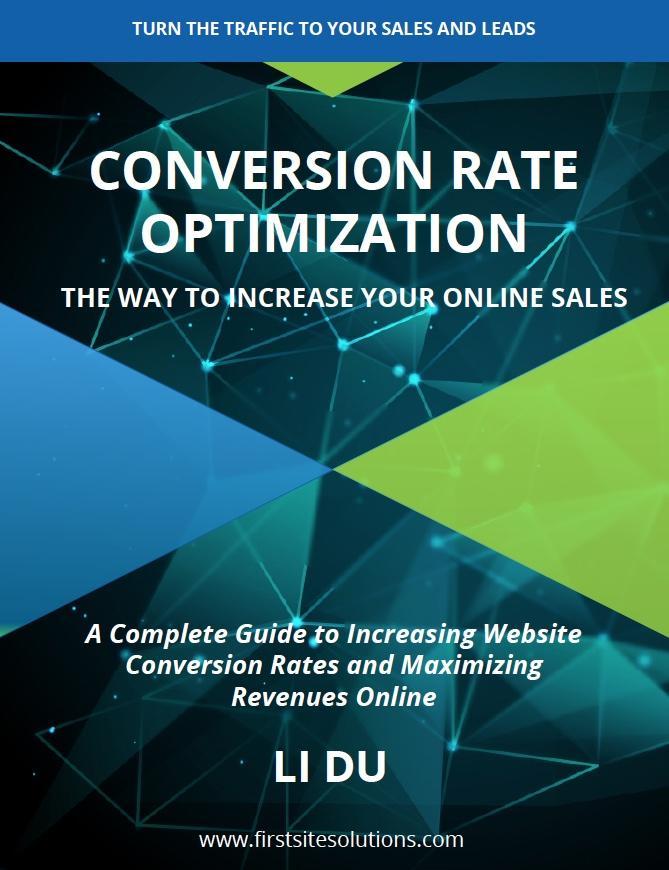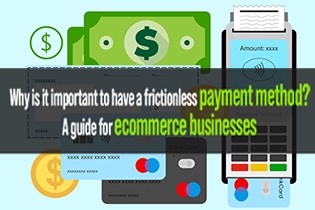
2020 took the world by storm - or a tornado, in all honesty. The pandemic showed how the world wasn’t ready for battling a crisis - be it health or in terms of economy.
But, what does it mean for retail?
As the economy took a nose-dive, many brick-and-mortar stores shifted their businesses online to survive. However, other retail stores were poorly equipped to face the wrath of the pandemic. The pandemic peaked in May 2020 - forcing many small business enterprises (SMEs) to either rethink their marketing strategies or shut down for good.
Despite the irony, 2020 was perhaps the best year for ecommerce sales. 2020 alone, saw a 42% increase in online sales from 2019 - giving the retail industry the boost it very well deserved. About 150 million people jumped on the digital bandwagon for the first time - mainly because the pandemic didn’t leave them with too much of a choice.
Around 6% of consumers from first world countries such as Canada, France, and the UK embraced online shopping for the very first time. This sudden surge in urban consumership was motivation enough for small brands and huge enterprises to pivot their retail businesses on the internet.
Online consumers pumped $813 billion dollars worth of revenue into the economy from ecommerce sales in 2020. What’s more, according to Adobe, online sales are expected to skyrocket to a trillion-dollar industry in the forthcoming year.
As you go down below, you will read about 4 strategic changes that we believe will help you rescue or promote your ecommerce business to new heights of growth and success.
Social Media Optimization:
Social media platforms are a cornerstone of online presence and let e-commerce retailers expand their reach to every demographic of digital audiences.
The significance of social media platforms in influencing consumers is nothing new, but the pandemic has accelerated the incessant growth in this department.
Let us talk about the new kid on the block; TikTok.
TikTok has seen an unprecedented growth and is currently the most downloaded app on Apple’s app store. The platform is looking to capitalize on this newly-found popularity by reaching out to businesses through TikTok Shopping.
This new feature is a collaboration between TikTok and Shopify and will enable merchants to easily integrate TikTok in their ad campaign through the TikTok For Business Ads Manager. The dashboard will allow Shopify merchants to access native app tools to create organic TikTok content. The organic content in question will take the shape of a video ad that will appear in the feed just like any other TikTok video.
This partnership will allow both established Shopify merchants to extend their reach and let influencers monetize through their own merchandise as is the case with Kylie Jenner’s Kylie Cosmetics, one of the first major proponents of TikTok Shopping.
TikTok Pixel is a tool for in-depth tracking of user actions for your ad campaign and is rapidly gaining traction. This is not only the case for TikTok but new features, tools, and updates are being rolled out for all platforms to leverage this accelerated growth.
Live-streaming has also seen a massive surge and is not only fostering new talent but is also getting more and more attention from celebrities, especially musicians, to promote their content. An unprecedented amount of musicians and artists have taken to Facebook, Youtube, and Twitch to livestream to a rapidly growing number of people on these platforms.
When the pandemic abates, people will be eager to finally attend these events in person and the numbers are flatlining, but nevertheless, this has set a precedent. In the coming year, a hybrid design leveraging both in-person and virtual audiences is likely to bring innovation and attention.
- Dua Lipa is one of many popular musicians who have taken to the new trend of holding virtual concerts with her concert drawing in an astounding 5 million viewers.
- Some brands have jumped on the livestream bandwagon with clothing brand Roman livestreaming their new collections and making a separate live category for viewers to easily find products from the livestream.
The pandemic has seen an ever greater integration between brands and social media, blurring the lines between real-life and virtual presence. This trend is likely to carry forward in the coming year.
Voice Search Optimization

Who has the time to type nowadays? Maybe Apple’s Siri helped us with this blog; you’d never know.
Apart from Amazon’s Alexa and Okay Google, voice assistants are increasingly catching up with every passing day. Ever since Amazon rolled out its smart speaker in 2015, the voice-search technology has completely revolutionized the ecommerce market with its echo.
In 2019, voice search was in its initial days. It was mainly backed by 20% of smartphone users who relied on voice search technology for navigating through directions or to addresses. But, thanks to Amazon Echo and its utterly flexible API, many brands are now connecting their intelligent AI assistants via the smart speaker to the public.
Online consumers prefer to use voice search in areas where visual research isn’t a major requirement. For instance, voice search became a hit in the food and homeware departments, mainly because the two didn’t require much visual aid.
While Apple’s Siri is soon going out of action due to its limitance, others including Cortana, Google’s Assistant, and Amazon’s Alexa are trumping the competition.
Alexa is out there with its free-to-acquire skills for brands that are seeking Amazon as their interface for ecommerce sales. While Alexa cannot be a substitute for your butler (hello, luxury), it is safe to say that voice-search assistants can make online shopping quite easy.
From a mere 13% in 2018 to an expected surge to 55% in upcoming 2022, voice search will be the new interface for online shoppers in retail. For any brand to survive - especially in 2022 - it might be helpful to leverage voice search for better accessibility and reliability.
While your in-house SEO expert has already taken care of your product’s keywords in Google searches, it is time to raise that bar by enabling voice commands as well. Voice search is mainly facilitated by natural language processing (NLP), in which a computer uses machine learning technology to understand and analyse speech.
- By enabling voice commands on your landing pages, you are actually optimizing your website to appear in voice-searches on online directories.
- Once an AI-powered voice assistant ‘hears’ a verbal command with a specific phrase or keyword, it will redirect you to the top searches that are ranked.
- NLP helps the AI voice assistant to interpret language properly by cross-questioning any mispronounced phrase with possible suggestions.
- Using NLP in your voice-search software will enable you to process any and all intel that’s transmitted via voice commands.
For instance, the 25 - 50 year old demographic (hello, millennials and early boomers) are more interested in multi-tasking via voice search commands, thanks to a poor work-life balance.
Plus, who has the time to toggle a keyboard. Most people have Google as one of their main widgets on the homepage. A voice-transmitted script allows consumers to search for content without paying attention or typing on the screen. This makes it quite ideal for drivers who are busy putting in directions on their Google maps, only to meet in an accident later on.
Augmented Reality and Virtual Reality
Online shopping saves you from going out and swifting through endless aisles - as it did during the pandemic. But, while it has its pros, online shopping can seem like a major turn-off for consumers who want to test the product before completing a purchase.
While certainty is a subjective state of mind, it is true that around 73% shoppers get cold feet before completing a purchase online. Why would anyone go through all the trouble of selecting an item, adding to the cart, and then leaving it unattended?

Imagine going all the way out to a mall that is located on the outskirts of your town only to abandon your shopping cart at the last second. Why make a trip in the first place, right?
But, the scenario is completely different when a consumer is looking for a product online. So, what exactly do online retailers need to do to convince a consumer that their product is legit and worthy of sales? While testimonials and product reviews motivate a customer to go through with a purchase, virtual reality and augmented reality are innovative technologies that can help seal that decision.
Virtual Reality allows consumers to ‘consume’ a simulated experience without investing anything emotionally or physically. VR headsets have been around for a long time, and have completely revamped the world of gaming and entertainment. With over 450 indie VR companies listed on AngelList’s startup community, the world of VR ensures to be promising in the future.
- For instance, IKEA introduced its virtual AR catalog in 2014 that gave consumers the liberty to visualize furniture in their homes before purchasing. This way, consumers found it relatively easy to make a purchase decision online without any regrets to follow.
Augmented Reality, on the other hand, allows consumers to ‘experience’ a virtual element in a real life-like setting. With the help of sensory aids such as visual and audio elements, online retailers can help consumers experience the luxury of their product without purchasing.
Virtual stores are possibly the next big thing in ecommerce. Many online retailers are introducing the concept of virtual showrooms so that consumers can experience a simulation of the product catalog wherever they desire.
- Consider Lowe’s Holoroom, another intriguing example of the use of emerging technology in the home improvement sector. For over a century, Lowe’s Holoroom has maintained its dignity and reputation by delivering the expectable to its consumers.
- Lowe’s Holoroom allows consumers to witness the concept and outlook of their homes before the actual production is brought to life. It is easier to visualize your architect’s plans in 3D beforehand so that you can tweak the blueprints and make edits where required.
Personalized Marketing Campaigns
While it’s true that the pandemic shut down several SMEs as well as brick-and-mortar retail stores; it also opened doors to a brand new wave of growth for ecommerce. To grow your ecommerce store exponentially, you need to make a few - okay, make that a lot - changes in your business strategy.
From revamping your marketing policies to personalizing your consumers’ experience online, you need to prove that you’re better than the competition.
Leveraging consumer data for digital marketing campaigns is a huge task, but quite important for personalizing consumer experiences. With ecommerce picking up drastically day by day, consumers tend to prefer brands that offer personalized experiences rather than ones that are redundant.
The first step is to understand your consumers’ mindset; and the rest will follow. According to a report by Accenture, about 91% of online consumers prefer following and staying loyal to brands that offer personalized and customized experiences. Around 22% of consumers are comfortable with imparting data online - only because they believe that your brand will do justice and value their loyalty.
Email marketing is one of the oldest digital marketing tactics to still hold its stake in retaining customers online. If your consumers are leaving your website without making a purchase, hit them up with a personalized email reminder. To this day, email marketing campaigns that shower appreciation with a simple ‘thank you’ message generate a 67% open rate comparatively.
One main consideration that you should keep in mind is that consumers don’t want to spend a lot of time on gimmicks or products that don’t matter to them.
- Check out Uber’s email marketing campaign which despite being selective, is quite minimal and concise.
- Uber takes this into consideration by leveraging user data and offering discounts and promotional offers to their loyal consumers.
- We are sure you have Netflix in your region, right? Netflix is one of the primest examples of how the big streaming website leverages your browsing data to bring you similar shows that you might be missing out on.

Ecommerce is a competitive race; it has guaranteed a livelihood to many, and at the same time, left others bankrupt due to its challenges. The ecommerce industry saw the application of Darwin’s theory into their sales predictions. And very rightfully so, only the fittest [in retail] will be able to survive the fluctuating trends that are in store for the ecommerce industry.
From incorporating VR in online shopping for facilitating shoppers at home to helping consumers connect via voice search, 2022 holds a bright future for ecommerce.







